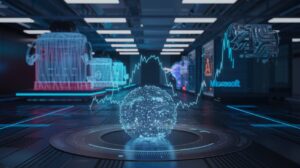AI Advances Unveiled: UiPath CEO Reveals the Shocking Future of Automation and American Jobs — that’s the headline sparking a new wave of debate and insight across American industries. In a world where automation and artificial intelligence are evolving faster than ever, UiPath CEO Daniel Dines offers a bold perspective: automation isn’t here to steal jobs—it’s here to transform them.
What Is Agentic Automation and Why Should Americans Care?
Agentic automation is a breakthrough form of AI where bots act as semi-autonomous agents, capable of making context-aware decisions and working alongside humans—not just for them.
Unlike traditional automation (which followed simple, rule-based actions), agentic AI systems are designed to:
- Understand user intent
- Adapt in real-time
- Reduce repetitive tasks
- Increase speed, quality, and innovation
Traditional vs. Agentic Automation
| Feature | Traditional Automation | Agentic Automation |
|---|---|---|
| Task Handling | Rule-based, repetitive | Context-aware, adaptive |
| Human Involvement | Minimal | Collaborative |
| Innovation Contribution | Low | High |
| Job Replacement Risk | Moderate | Low |
| Future Role in Workplaces | Support tasks only | Strategic partner in workflow |
The Real Impact on American Jobs: Growth or Elimination?
UiPath’s CEO made it clear: AI isn’t about replacing people—it’s about evolving their roles. In fact, according to the World Economic Forum:
- 85 million jobs may be displaced by 2025 globally
- But 97 million new jobs will be created to support a hybrid AI-human economy
In the U.S. specifically, industries like healthcare, finance, logistics, and customer support are already showing trends where:
- AI reduces repetitive tasks by up to 38%
- Human creativity and decision-making are amplified
- New roles such as AI Analyst, Automation Coordinator, and AI Trainer are emerging fast
AI Advances, Why Automation Is Now a Partner—Not a Threat
Daniel Dines introduces a refreshing idea: AI is not the “job killer” it was once feared to be. Instead, it’s the workplace partner that helps employees:
- Do more in less time
- Make smarter decisions faster
- Focus on strategic, creative, or human-facing tasks
AI handles the routine, humans lead the mission.
This shift is supported by economic data:
According to McKinsey, U.S. companies that implement intelligent automation see up to 40% savings in labor cost while increasing performance by 20–25% within the first 18 months.
Where We’re Headed: How U.S. Workplaces Will Look by 2030
By 2030, over 65% of American businesses are expected to have AI agents embedded in daily operations, especially in areas like:
- Customer service: AI handling common queries, humans solving complex ones
- Healthcare: AI supporting diagnostics, humans focusing on care
- Finance: AI managing risk analysis, humans offering personalized advice
Conclusion: America’s Job Market Isn’t Ending—It’s Evolving
The biggest takeaway? AI isn’t replacing jobs; it’s rebuilding them. UiPath’s insights show us that when used correctly, agentic automation won’t remove humans from work—it will free them from monotony and unleash new creative, strategic opportunities.
- Job displacement will be met with even greater job creation
- Businesses will gain more efficiency and save costs
- Workers will gain more purpose and satisfaction in roles redefined by AI
Now is the time for U.S. professionals and employers to embrace this shift—not fear it.
[USnewsSphere.com / WSJ]





